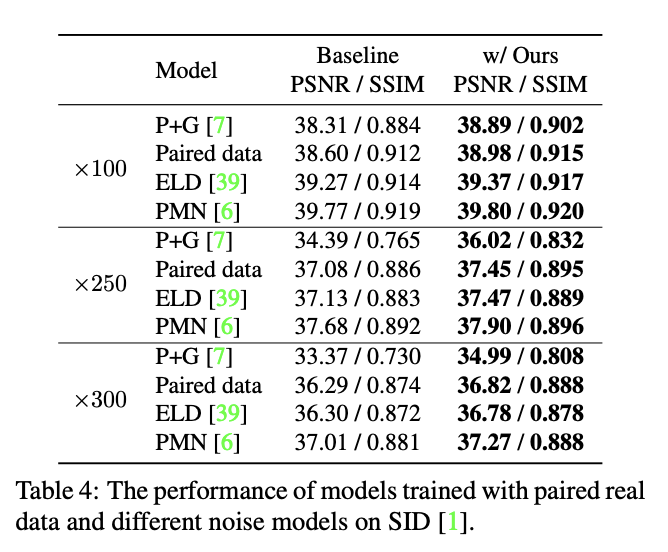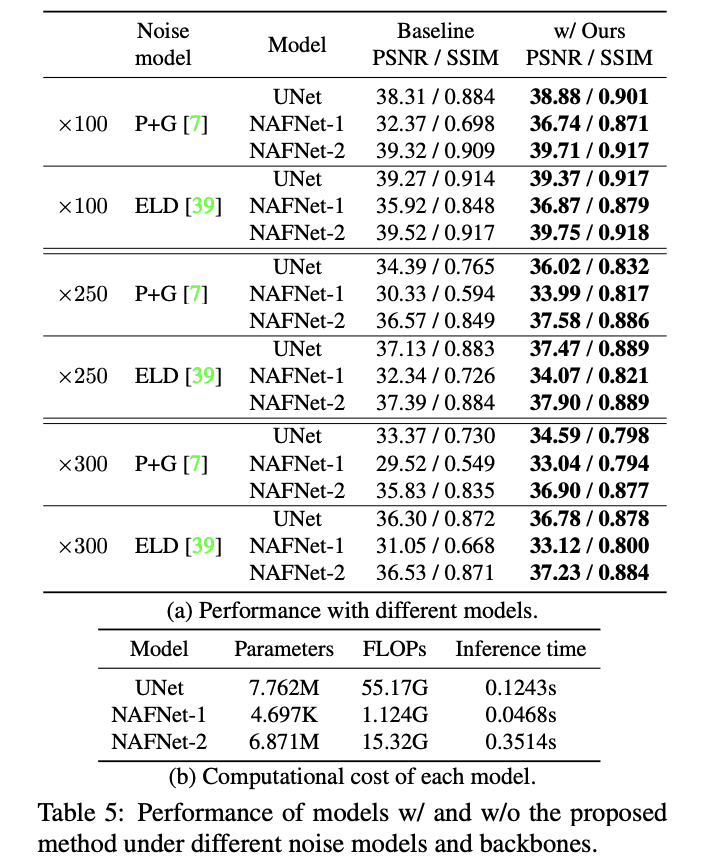Welcome! This is the official implementation of the paper "ExposureDiffusion: Learning to Expose for Low-light Image Enhancement".
-
Yufei Wang, Yi Yu, Wenhan Yang, Lanqing Guo, Lap-Pui Chau, Alex C. Kot, Bihan Wen
-
$^1$ Nanyang Technological University$^2$ Peng Cheng Laboratory$^3$ The Hong Kong Polytechnic University
(2023.8.08): The training and testing codes are released
(2023.7.14): 🎉 Our paper was accepted by ICCV 2023
- The first diffusion model designed for low-light image enhancement (LLIE) in raw space.
- Better performance than vanilla conditional diffusion models for image restoration: better performance using fewer inference steps (e.g., only 3 steps) and fewer parameters.
- Can be combined with SOTA noise models and denoising backbones.
- (For using diffusion models for the LLIE task in the sRGB space, we recommend our recent work ShadowDiffusion: When Degradation Prior Meets Diffusion Model for Shadow Removal (Table 6 in the paper).)
- We propose to use a diffusion model to simulate the real exposure process. The noisy image with a short exposure time is an intermediate step
$X_t$ in the diffusion process, i.e., the initial step$X_T$ is the input low-light image in our method instead of from a pure noise in vanilla conditional diffusion models for image restoration
- To integrate the noisy image into the diffusion process, we do some key modifcations to the assumpation of the diffusion process, which is summarized as follows.
- The overall training/inference pipeline is as follows where we start from the low-light image
$X_T$ , instead of a Gaussian noise.
Please install the packages required by ELD.
Besides, you may need to download the ELD dataset and SID dataset as follows
- ELD (official project): download (11.46 GB)
- SID (official project): download (25 GB)
For the training of models with the UNet backbone:
# For the training of P+g noise model (results in Table 2, 3, 4, 5)
python3 train_syn.py --name sid_Pg --include 4 --noise P+g --model eld_iter_model --with_photon --adaptive_res_and_x0 --iter_num 2 --epoch 300 --auxloss --continuous_noise --adaptive_loss
# For the training of P+G+r+u noise model, i.g., ELD noise model (results in Table 4, 5)
python3 train_syn.py --name sid_PGru --include 4 --noise P+G+r+u --model eld_iter_model --with_photon --adaptive_res_and_x0 --iter_num 2 --epoch 300 --auxloss --concat_origin --continuous_noise --adaptive_loss
# For the training of the model based on real-captured paried data (results in Table 4)
CUDA_VISIBLE_DEVICES=1 python3 train_real.py --name sid_real --model eld_iter_model --with_photon --adaptive_res_and_x0 --iter_num 2 --epoch 300 --auxloss --concat_origin --adaptive_lossFor the training of the models with NAFNet backbone (results in Table 5):
# NAFNet with P+g noise model
CUDA_VISIBLE_DEVICES=0 python3 train_syn.py --name sid_Pg_naf2 --include 4 --noise P+g --model eld_iter_model --with_photon --adaptive_res_and_x0 --iter_num 2 --epoch 300 --auxloss --continuous_noise --adaptive_loss --netG naf2
# NAFNet with ELD noise model
CUDA_VISIBLE_DEVICES=0 python3 train_syn.py --name sid_PGru_naf2 --include 4 --noise P+G+r+u --model eld_iter_model --with_photon --adaptive_res_and_x0 --iter_num 2 --epoch 300 --auxloss --concat_origin --continuous_noise --adaptive_loss --netG naf2You can download the pre-trained models from google drive, which includes the following models
- The UNet model trained on P+g noise model (
SID_Pg.pt), ELD noise model (SID_PGru.pt), and real-captured paired dataset (SID_real.pt). - The NAFNet model trained on P+g (
SID_pg_naf2.pt) and ELD noise models (SID_PGru_naf2.pt).
For the evaluation of models, you shall use the same hyper-parameters (i.e., the same usage of --concat_origin ) with the training ones. For example, if you want to evaluate the performance of the models based on NAFNet, you shell use the following commands
# Test of the ELD+NAFNet model
python3 test_ELD.py --model eld_iter_model --model_path "the path of the ckpt" --include 4 --with_photon --adaptive_res_and_x0 -r --iter_num 2 --netG naf2 --concat_origin
# Test of the Pg+NAFNet model
python3 test_SID.py --model eld_iter_model --model_path "the path of the ckpt" --include 4 --with_photon --adaptive_res_and_x0 -r --iter_num 2 --netG naf2For the evaluation of ELD dataset, we just keep the other settings the same, and only change the file name from test_SID.py to test_ELD.py. For example, the command to evaluate the performance of the UNet model trained on real data is as follows
python3 test_SID.py --model eld_iter_model --model_path checkpoints/sid_real/model_300_00386400.pt --concat_origin --adaptive_res_and_x0 --with_photon -r --include 4To evaluate the effect of different inference steps, you can change the value of --iter_num (default: 2). You can get a similar result as the following one where we evaluate the quality of the predicted clean image of each step
- The proposed method can get converged in 3 steps, which is much faster than DDIM. Besides, better performance is achieved under a smaller number of parameters.
- The proposed method can be combined with real-captured paired data/different SOTA noise models. Stable improvement are achieved.
- The proposed method can also be combined with different backbone networks, e.g., SOTA denosing backbone NAFNet. Models of different sizes have significant performance improvements
If you find our code helpful in your research or work please cite our paper.
@article{wang2023exposurediffusion,
title={ExposureDiffusion: Learning to Expose for Low-light Image Enhancement},
author={Wang, Yufei and Yu, Yi and Yang, Wenhan and Guo, Lanqing and Chau, Lap-Pui and Kot, Alex C and Wen, Bihan},
journal={arXiv preprint arXiv:2307.07710},
year={2023}
}The purpose of the use is non-commercial research and/or private study.
This work is based on ELD and PMN. We sincelely appreciate the support from the authors.
If you would like to get in-depth help from me, please feel free to contact me (yufei001@ntu.edu.sg) with a brief self-introduction (including your name, affiliation, and position).








